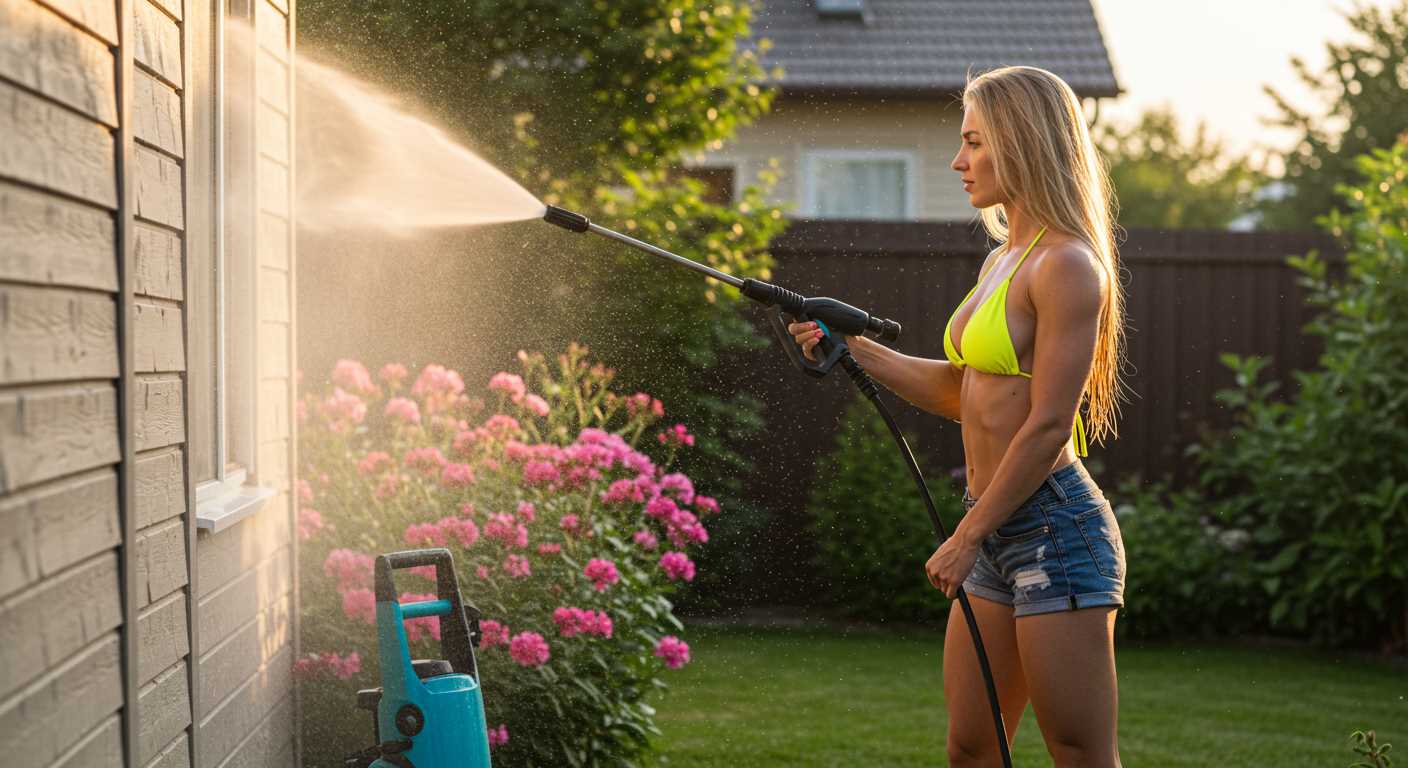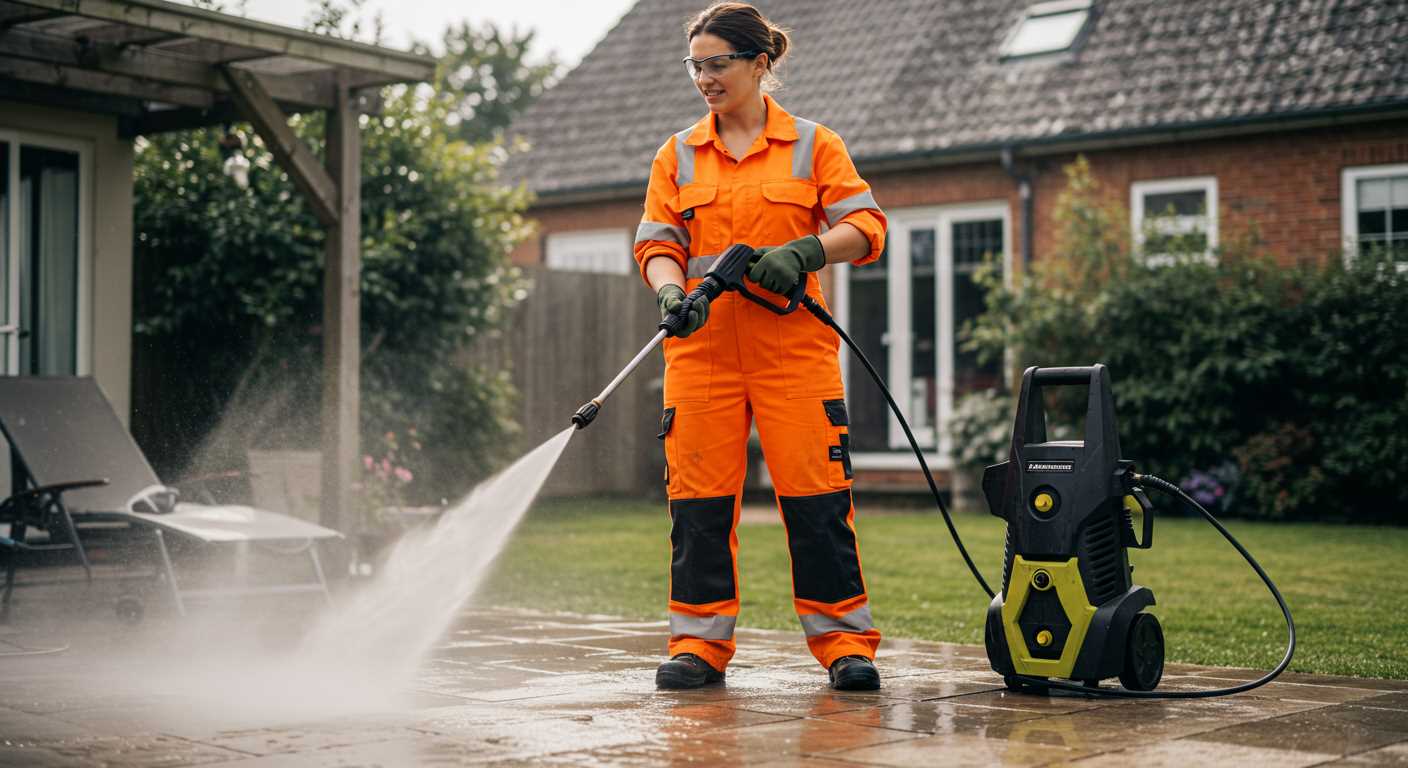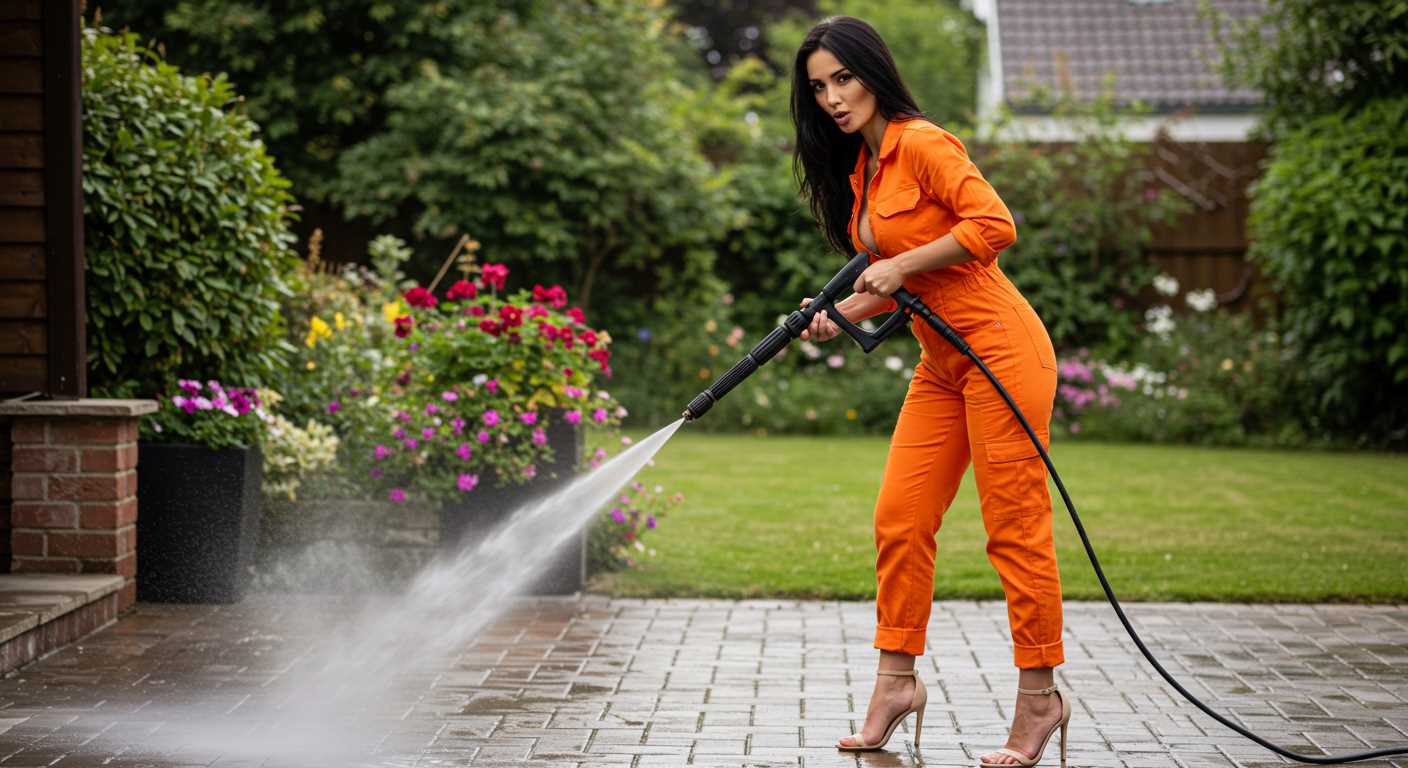



Repurposing a motor to function as a high-pressure cleaner can deliver impressive results. Begin by securing a compatible pump that can handle the required pressure levels. A typical pump should offer at least 2000 PSI for effective cleaning tasks. Ensure that the pump’s inlet can connect seamlessly to your motor, and confirm the specifications so that it matches the output performance.
Next, consider utilising a belt drive system to connect the motor to the pump. This connection will allow for better torque transfer and reduce wear on both components. A belt with the proper tensile strength is crucial to avoid slipping or breaking during operation. It’s also advisable to design a sturdy mounting system to hold both the motor and the pump securely in place during use.
Don’t overlook the importance of appropriate hoses and nozzles. Select high-pressure rated hoses that can withstand the force generated by your setup. A variety of nozzles will provide flexibility for different cleaning applications, enabling you to tackle both delicate surfaces and tough grime effectively. Finally, incorporating a safety valve and pressure gauge will enhance usability and safety, ensuring you have control over the system’s performance while preventing excessive pressure buildup.
Building a High-Pressure Cleaning System

Select a suitable motor, preferably one with a minimum power of 5 horsepower. This ensures sufficient force to drive the pump effectively. Choose between petrol or diesel, depending on your accessibility to fuel types.
Pump Selection
The pump requires high pressure, typically rated at 2000 to 4000 PSI. A triplex plunger pump is ideal, offering durability and pressurised performance. Look for models with ceramic plungers to withstand wear.
Connecting Components

Utilise high-pressure hoses rated to handle at least the pump’s PSI. Connect the pump to the motor using a flexible coupling to absorb vibrations and prevent damage. Ensure all fittings are tight to prevent leaks, often employing PTFE tape for extra security.
| Component | Specification |
|---|---|
| Motor Power | 5 HP Minimum |
| Pump Type | Triplex Plunger |
| Pump Pressure Rating | 2000 – 4000 PSI |
| Hose Rating | 2000 PSI Minimum |
Finally, attach nozzles suited for specific tasks–varying spray angles help adjust cleaning intensity for different surfaces. Carefully test the system to ensure everything operates smoothly and at the desired pressure before regular use.
Choosing the Right Motor for Conversion

Opt for a four-stroke motor with at least 5 horsepower for optimal performance. This specification ensures sufficient water pressure without compromising engine longevity. Two-stroke models, while lighter, often lack the durability needed for continuous operation.
Consider Engine Size and Weight
The motor should not only be powerful but also manageable in terms of size and weight. A compact design facilitates easier installation and handling. Aim for a weight under 50 kg; anything heavier can complicate portability and usage.
Fuel Type Matters
Select a petrol engine for portability, but don’t overlook diesel options if you prioritise efficiency and run-time. Diesel units generally provide better fuel economy and can handle extended usage without overheating. Ensure compatibility with your water pump attachment for seamless integration.
Required Tools and Materials for the Project
Gather the following items to successfully complete the modification:
Tools:
– A set of wrenches and socket drivers for fastening components.
– A screwdriver set, both flathead and Phillips, for assembling various parts.
– Pliers for gripping and bending components as needed.
– A multimeter to check electrical connections and troubleshoot issues.
– A drill with metal and wood drill bits for creating necessary holes in mounting surfaces.
– A saw, preferably a reciprocating saw, to cut any material that requires resizing.
Materials:
– A high-pressure pump that matches your specifications. Research and select one capable of delivering the desired PSI.
– A suitable motor for powering the pump, ensuring compatibility regarding RPM and output.
– High-pressure hoses rated for the necessary pressure, typically 3000 PSI or higher.
– Multiple fittings and connectors for secure tube and pump connections, ensuring no leaks during operation.
– An oil filter and any necessary lubricants, ensuring the longevity of mechanical parts.
Having these tools and materials ready will streamline the process and make the project manageable. Always double-check compatibility between components before proceeding.
Steps to Modify the Engine for High Pressure
First, increase the RPM to achieve higher output. Adjust the throttle linkage to ensure full opening during operation. This adjustment allows the motor to reach its maximum revolutions, generating the necessary force for effective cleaning.
Next, replace the stock pump with a heavy-duty version designed for high pressure. Look for models that feature ceramic pistons and brass heads for enhanced durability and performance. A pump with an adjustable pressure setting enables fine-tuning according to specific tasks.
Incorporate a pressure relief valve to avoid damage from excessive force. This mechanism can redirect water back into the system if it exceeds a predetermined limit, protecting components from failure.
Enhance the intake system by upgrading to a larger diameter hose. This modification will improve water flow, reducing strain on the motor and maintaining consistent pressure levels during use.
Consider installing a belt drive system for better torque transmission. A belt drive reduces wear on the motor and allows for different gearing options, optimising performance for various cleaning tasks.
Ensure proper alignment of all components. Misalignment can lead to increased wear and tear, affecting efficiency and reliability. Use a level to confirm that the pump and motor are correctly positioned.
Finally, frequent maintenance is paramount once modifications are complete. Regularly check for leaks, inspect seals, and clean filters to ensure longevity and proper functioning of the modified setup.
Connecting the Water Source to the Engine
Utilise a high-quality garden hose to create an efficient water supply. Ensure the hose diameter matches the specifications of the pump to prevent any flow restrictions. I recommend opting for a hose with a diameter of at least 3/4 inch, as it facilitates greater water flow.
Next, attach a hose connector that fits snugly onto the pump intake. This component is crucial for maintaining a leak-free connection. Use Teflon tape on the threads to enhance sealing and prevent leaks over time.
If the water source is a faucet, employ a quick-connect coupling to streamline the assembly and disassembly process. This feature allows for straightforward detachment when not in use, ensuring the setup remains tidy and organised.
Consider adding a filter to the water inlet. This will prevent debris from entering the pump, ensuring longevity and optimal performance. Replace the filter regularly to maintain maximum efficiency.
When routing the hose, ensure there are no kinks or sharp bends that might restrict water flow. Lay the hose flat and keep it away from sharp objects that could cause punctures. If necessary, secure the hose with brackets or stakes to maintain its position.
Before beginning operations, check the water supply for adequate pressure. A minimum of 20 PSI is usually required for most pumps to operate effectively. If using a rainwater collection system or other non-standard source, test the flow rate to confirm it meets the required standards.
Finally, ensure all connections are tight and secure before starting the engine. This practice will safeguard against leaks and pressure loss during operation, maximising the performance of your unit. A thorough inspection now will save time and effort later.
Installing the Nozzle for Optimal Spray Pattern
Selecting the right spray nozzle is critical for achieving the desired cleaning results. Opt for a nozzle that matches the intended task, whether it be removing grime from driveways or washing delicate surfaces such as cars.
Consider these factors when selecting and installing the nozzle:
- Nozzle Type: Different types offer varying spray patterns. A fan nozzle is excellent for larger areas, while a pinpoint nozzle provides concentrated streams for stubborn stains.
- Pressure Rating: Ensure the nozzle can handle the maximum output pressure of the modified system. Using an incompatible nozzle can lead to damage or ineffective cleaning.
- Diameter: The diameter of the nozzle affects flow rate and pressure. Larger openings generally provide lower pressure and wider spread, while smaller ones increase pressure.
Installation involves the following steps:
- Turn off the water supply and disconnect everything before attaching the nozzle.
- Align the nozzle with the connector on the hose. Secure tightly to prevent leaks.
- Test the spray pattern by briefly activating the system, ensuring the coverage meets your needs.
Adjustments may be necessary; some nozzles allow rotation for altering the spray pattern. Regular checks for clogs or wear on the nozzle will maintain optimal performance. I recommend experimenting with various nozzles to find the one that works best for your specific cleaning tasks.
Creating an Inlet System for Water Flow
For effective water intake, the inlet system must be designed with precision. Begin with a sturdy hose of at least 3/4 inch diameter to handle the flow required. Ensure the hose is rated for high pressure to avoid ruptures during operation.
Fit a mesh filter at the water source connection. This avoids debris entering the system, which could block the pump. A filter with a removable screen allows easy cleaning and maintenance. Secure the filter tightly to prevent leaks.
Install a shut-off valve right after the filter. This allows control over the water supply and is invaluable during service or testing. Use standard pipe fittings to connect all parts, ensuring no sections are susceptible to leaks.
Ensure the inlet hose maintains a straight path to the pump. Any bends or kinks will restrict water flow. If necessary, use elbow fittings judiciously, maintaining a smooth profile. Test the assembly for stiffness; it should not cause undue strain on connections.
Finally, consider adding a pressure gauge to monitor water flow, as this provides real-time feedback for optimal performance. A proper gauge setup allows adjustments to be made quickly, ensuring the system runs smoothly.
Testing the Pressure Washer Performance
Begin with checking the water output. Measure the flow rate by timing how long it takes to fill a known volume, like a 5-litre container. Calculate the litres per minute (LPM) by using the formula: volume (litres) divided by time (minutes). Aim for at least 7–12 LPM for effective cleaning.
Next, assess the spray pressure. Use a pressure gauge installed at the nozzle. Ideally, the output should range from 1000 to 3000 PSI, depending on the intended applications. An exceptional unit can deliver even higher pressures, effectively tackling more stubborn dirt.
Conduct a performance test on a variety of surfaces. Set up a test area with different materials such as concrete, wood, and metal. Apply the nozzle at varying distances (approximately 12 to 24 inches) to evaluate cleaning effectiveness. Look for a consistent removal of grime without causing damage.
Check nozzle compatibility. Different spray patterns provide distinct cleaning results, so switch between the fan, narrow, and rotary nozzles to determine which works best for your tasks. Ensure the spray patterns suit the surfaces being cleaned.
Monitor the temperature of the water while in operation. If you’re utilising a hot water source, keep it below 60°C to prevent any damage to parts and ensure safety during use. Consistently high temperatures could indicate a need for cooling adjustments.
Evaluate the durability of components under pressure. Run the system for extended periods, inspecting seals and hoses for leaks or failures. Maintenance issues often arise from prolonged use under high load.
Finally, make adjustments based on the feedback from your tests. Tuning the power settings or modifying nozzle options can greatly impact overall performance. Record results and improvements to establish a reference for future optimisations.
Safety Precautions During Operation
Always wear appropriate personal protective equipment (PPE) to safeguard against high-pressure water and debris. This includes:
- Safety goggles to protect your eyes from splashes.
- Non-slip footwear to prevent slipping on wet surfaces.
- Gloves to avoid skin contact with water, chemicals, or hot components.
- Ear protection if noise levels exceed 85 dB.
Before starting, check that all connections are secure to prevent leaks and ensure safe operation. Inspect hoses and fittings for any signs of wear and replace damaged parts immediately. If using an electrical source, confirm that it is suitable for outdoor use and correctly grounded to prevent electric shock.
Maintain a safe distance from bystanders and pets during use. Establish a designated working area where access is restricted. Use barriers or warnings to notify others of the ongoing work.
Never point the spray at people, pets, or delicate surfaces. The force can cause injury or damage. Be cautious around electrical outlets, lights, and other electrical equipment. Keep the equipment stable on a flat surface to prevent tipping.
After operation, turn off the fluid source and allow the system to depressurise completely before disconnecting hoses. Clean the equipment thoroughly to prevent corrosion and ensure longevity. Store in a dry place to keep components in good condition.
If using chemicals or cleaning agents, read the labels carefully and follow all safety instructions. Always add the agent to water, never the other way around, to avoid violent reactions.
In case of emergencies, know the location of first aid kits, fire extinguishers, and procedures for handling injuries or chemical spills.
FAQ:
What are the basic components needed to convert an engine into a pressure washer?
To transform an engine into a pressure washer, you will need several key components. First, you require a high-pressure pump designed to handle the engine’s output. This pump will generate water pressure needed for cleaning tasks. Additionally, a suitable water supply is necessary to feed the pump, which can be from a hose or a tank. You will also need a pressure regulator to maintain consistent water pressure and prevent overload. Other essential components include a spray nozzle for directing the water, high-pressure hoses to connect the pump to the nozzle, and a mounting frame to secure everything in place. Lastly, ensure safety equipment, such as proper hoses and fittings, to avoid any leaks or accidents.
Can you explain the steps involved in the conversion process from an engine to a pressure washer?
Converting an engine into a pressure washer involves several steps. First, select a suitable engine; it should have adequate horsepower to drive the pump effectively. After securing the engine, mount it onto a stable frame. Next, attach the high-pressure pump to the engine. This usually involves aligning the pump’s drive shaft with the engine’s output shaft and securing it with bolts. After that, connect the water inlet of the pump to your water source. Install the high-pressure hose from the pump outlet to your spray nozzle. Don’t forget to include a pressure regulator if your pump doesn’t have a built-in one. Finally, check all connections for any leaks and ensure the system is securely set up. Once everything is in place, conduct a test run to ensure the pressure washer operates as intended before starting on any cleaning tasks.









